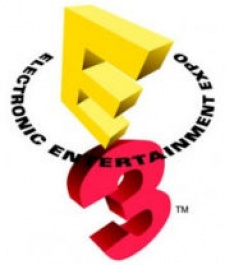Having spent the past nine years taking in the whole dog, pony and booth babe experience, this year's clash between E3 and Apple's WWDC developer event reduced our involvement to a mere day encounter.
Even those brief hours were enough to break out some trends, for under pressure from the move to downloadable content and the rising significance of mobile games, the industry is changing fast - something certainly reflected at E3 2011.
1. Nintendo gets all Fisher Price
The most obvious example of how the smartphone and tablet sector is impacting core games was seen in Nintendo's announcement of its Wii U console; notably for its bizarre everything-and-the-kitchen-sink tablet controller.
Given the massive success of the Wii was mainly due to its anyone-can-play motion controllers, Nintendo's decision to create something new that contains complex, multiple joypad buttons plus a 6-inch screen (accelerometer not withstanding: given the unit's size, it only makes things worse), demonstrates how scared it is about the rise of tablets.
However, its Fisher Price-approach to the problem, both in terms of the controller's size and build quality, and its inability to operate without access to the Will U console (i.e. as a standalone, portable device), suggests Nintendo's long home console legacy is stopping it understanding the new business reality, let alone making the most of the opportunity.
Combined with this, the company's continual decision to refrain from developing mobile games makes it seem increasingly insane - something its shareholders will no doubt soon be pointing out.
2. Barnes & Noble proves Android niche
It could be argued there's not much competition in the Android ecosystem, nevertheless it seems that Barnes & Noble's Nook Color is becoming a significant revenue source for certain developers.
This is especially interesting because as a device, Nook Color hasn't sold that many units (a couple of million at most), while Barnes & Noble announced last month it had done one million downloads from the newly opened store - again, not a large number from an app store these days.
Yet, the combination of a trusted source, which heavily curates the available content, and a literate audience happy to spend money on quality content is paying off, at least for some of the smaller developers who focus on word puzzles and more thoughtful games. And the bigger publishers are picking up on this too.
Which from Google's point of view is exactly as it should be. Android is designed for companies - operators, retailers, OEMs - to use in whatever way they see fit to extend their existing audiences into the mobile, tablet and tablet/e-reader space.
Next up, surely it will be Amazon's turn to impress us, and the development community.
3. And the beat goes on
Having spent a week in the arms of Qualcomm at its Uplinq developer show, it was good to see the other side of cutting edge mobile graphics in Nvidia's meeting room at E3.
Of course, as with Qualcomm's Desert Winds tech-demo-come-game, many of the titles highlighted on Nvidia's Tegra 2 platform (running on Motorola Xooms) are more technology peacocks than gameplay innovators.
This was even moreso when it came to software running the early Tegra 3 quad-CPU, dual-GPU chipsets that are expected to be available in various tablets in the autumn.
Still, looking at Capcom's Lost Planet 2 demo, not to mention the specific lighting, procedural texturing (using Allegorithm's Substance smarts), and Unreal Engine 3 demos, you can only wonder what the likes of Fishlabs, Polarbit, Trendy Entertainment and Gameloft are going to be doing with this situation, always assuming Nvidia and the OEMs can sort out the ongoing battery life issue.
4. Mobile opportunity or threat?
It's not rocket science, but as everything gradually moves online, and cross-platform becomes partly an issue of hooking into generic backend servers, the opportunity for traditional games publishers to cross-sell to their large embedded audiences - especially when it comes to virtual goods and currencies via mobile - is becoming their biggest, simplest opportunity.
Still, it's surprising how slowly the wheels are turning. Companies such as EA, Disney, Namco Bandai are investing in the area, but Capcom's new Beeline mobile and social company is a separation play from its core games operations, while the likes of Activision, Nintendo and THQ seem positively antagonistic to mobile/portable gaming.
5. How to disrupt tablet disruption
Most notable on the EA stand, where versions of FIFA and Madden for consoles and 3DS sat alongside iPad 2 releases (or iPhone 4 in the case of The Sims 3 expansions), it's clear the most forward-looking publishers are embracing mobile as an opportunity to grow their core profitability.
In terms of pure showfloor exposure, EA and Namco Bandai were the best, while Sony Ericsson and T-Mobile's presence continued the momentum from the industry that's come over the years (if sporadically) from the likes of Nokia and Gizmondo (remember them?).
Yet, the stand that had the potential to derail the entire dog and pony show remains game streaming start up OnLive, which was demonstrating how its supported PC games can run over wi-fi on iPad (or any other equivalent tablet device).
Sure, it's still in beta, and any network lag resulted in obvious video degradation, but assuming the network scales external to the US, and other vendors arise to dive down pricing, streaming games services not only have the potential to chip away at the console industry but to take a big chunk out of the app store business too, by which we still mean Apple's App Store business.
It's no wonder HTC is all over OnLive. We can only wonder if Google won't get in there quick and acquire, before Apple does.
The five key mobile game industry trends we saw at E3 2011
Threats, weaknesses and opportunities





















